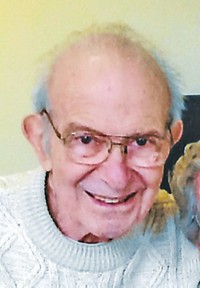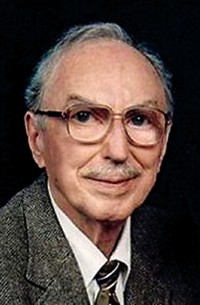Advertisement
Grab your lab coat. Let's get started
Welcome!
Welcome!
Create an account below to get 6 C&EN articles per month, receive newsletters and more - all free.
It seems this is your first time logging in online. Please enter the following information to continue.
As an ACS member you automatically get access to this site. All we need is few more details to create your reading experience.
Not you? Sign in with a different account.
Not you? Sign in with a different account.
ERROR 1
ERROR 1
ERROR 2
ERROR 2
ERROR 2
ERROR 2
ERROR 2
Password and Confirm password must match.
If you have an ACS member number, please enter it here so we can link this account to your membership. (optional)
ERROR 2
ACS values your privacy. By submitting your information, you are gaining access to C&EN and subscribing to our weekly newsletter. We use the information you provide to make your reading experience better, and we will never sell your data to third party members.
Environment
Obituaries
by Rachel Petkewich
February 26, 2007
| A version of this story appeared in
Volume 85, Issue 9
Elkan R. Blout, 87, a biochemist who did pioneering protein research as an academic, helped create new photographic dyes at Polaroid, and consulted for the Food & Drug Administration, died of pneumonia on Dec. 20, 2006.
Born in New York City, he completed an undergraduate degree at Princeton University and, in 1942, finished a doctorate in chemistry at Columbia University.
During the 1950s, Blout simultaneously pursued two jobs. As vice president and general manager of research at Polaroid, he led the team that created and helped commercialize the company's signature process to instantly develop color film using dyes and developing agents the team had created. In addition, he was a researcher at Harvard University, studying polypeptides.
Blout left industry in 1962 to do academic research full-time. Former students remark on his groundbreaking work related to understanding protein structures.
From 1978 until 1989, Blout was dean of academic affairs at Harvard School of Public Health.
In the 1990s, as a senior adviser for science at FDA, he helped review standards, coordinate scientists, and plan for future needs.
Blout received a National Medal of Science in 1990; he retired from Harvard the following year.
A fanatic fisherman and tenacious poker player, Blout loved to be at home and was involved in many civic causes. He is survived by his wife, Gail; four children; 10 grandchildren; and four great-grandchildren. An emeritus member, he joined ACS in 1940.
James W. Meadows Jr., 83, a nuclear scientist retired from Argonne National Laboratory, died on Oct. 24, 2006, after a brief illness.
He was born in Meridian, La. In 1944, he received a B.S. degree in chemical engineering at Louisiana Polytechnic Institute (now Louisiana Tech University), Ruston.
After briefly working at Cities Service Co. on the manufacture of aviation fuel, he went on to graduate studies in chemistry at Louisiana State University, Baton Rouge, where he received an M.S. in 1948 and a Ph.D. in 1950.
Meadows was a researcher at Harvard University's Nuclear Energy Center until 1958. He then joined what would become the Nuclear Engineering Division at Argonne and contributed to research there even after his formal retirement in 1992.
The American Nuclear Society made Meadows a fellow in 1989, recognizing him for, among other accomplishments, fundamental and applied studies of fission properties and developing nuclear instrumentation.
Colleagues remember that Meadows had both technical and personal qualities that are becoming increasingly scarce. His family remembers his steady devotion to family and his interests in photography, home electronics, and reading.
Meadows is survived by his wife, Mary Frances, and two children. An emeritus member, he joined ACS in 1944.
Edwin T. Pieski, 82, an industrial research chemist, died on Jan. 16.
Born in Dickson City, Pa., he earned a B.S. degree in 1945, an M.S. degree in 1946, and a Ph.D. in 1949 from Lehigh University in Bethlehem, Pa.
He worked as a research chemist and consultant at DuPont in Wilmington, Del., from 1949 to 1994, when he retired as a senior research chemist.
Pieski is survived by his wife, Dolores. An emeritus member, he joined ACS in 1945.
Hans Veening, 75, an analytical chemist retired from Bucknell University, died on Dec. 27, 2006.
Born in Arnhem, the Netherlands, he received a B.A. from Hope College, in Michigan, in 1953, and M.S. and Ph.D. degrees in chemistry from Purdue University in 1955 and 1959, respectively.
He was an early and strong advocate for undergraduate research. After a distinguished career of 39 years on the chemistry faculty, he retired from Bucknell in 1997. His service included 11 years as department chair and working with more than 120 students.
His pioneering work in the early 1970s on liquid chromatographic (LC) analysis of metal chelates produced the seminal paper in that field. Veening's work with LC and, later, capillary electrophoresis of hemodialysate fluids were also firsts. Throughout the 1980s and '90s, Veening helped develop sensitive fluorometric methods of detection for LC separations.
Colleagues say the excellence that Veening demanded of himself and inspired in his students and colleagues has left an indelible mark at Bucknell.
In retirement, Veening continued to serve the chemistry community in ways ranging from assembling alumni news to raising funds for student research. He also was a member of the board of directors of the Friends of Joseph Priestley House, serving as president of that body in 2005.
An emeritus member, he joined ACS in 1955 and served as chair of the Susquehanna Valley Local Section in 1970.
He is survived by his wife of 49 years, Betty.
David H. Volman, 90, professor emeritus of chemistry at the University of California, Davis, died on Jan. 8 after a brief illness.
Born in Los Angeles, Volman received bachelor's and master's degrees in chemistry from the University of California, Los Angeles, in 1937 and 1938, respectively. He completed his Ph.D. at Stanford University in 1940, and joined UC Davis as an instructor and junior chemist that same year. During World War II, he was posted at Northwestern University as a research chemist for the U.S. Office of Scientific Research & Development.
In 1946, Volman returned to UC Davis; he served as department chair from 1974 to 1980. He retired in 1986 but continued to be active, cycling to the department almost daily. Family members say the only reason he retired was because retirement was mandatory then.
Volman's research focused on photochemistry and surface chemistry. His work on the effects of ultraviolet light on hydrogen-oxygen reactions provided the basic knowledge needed to understand problems such as atmospheric smog and the functioning of the ozone layer.
He took politics seriously and was active in various political causes. In 1970, Volman presented a statement opposing the war in Indochina and the invasion of Cambodia—signed by some 200 university faculty members who pledged to support peaceful antiwar activities—to a meeting of faculty and staff.
His wife of 57 years, Ruth, died in 2001. Volman is survived by three children. An emeritus member, he joined ACS in 1942.
Obituaries are written by Rachel Petkewich. Obituary notices may be sent to r_petkewich@acs.org and should include detailed educational and professional history.




Join the conversation
Contact the reporter
Submit a Letter to the Editor for publication
Engage with us on Twitter